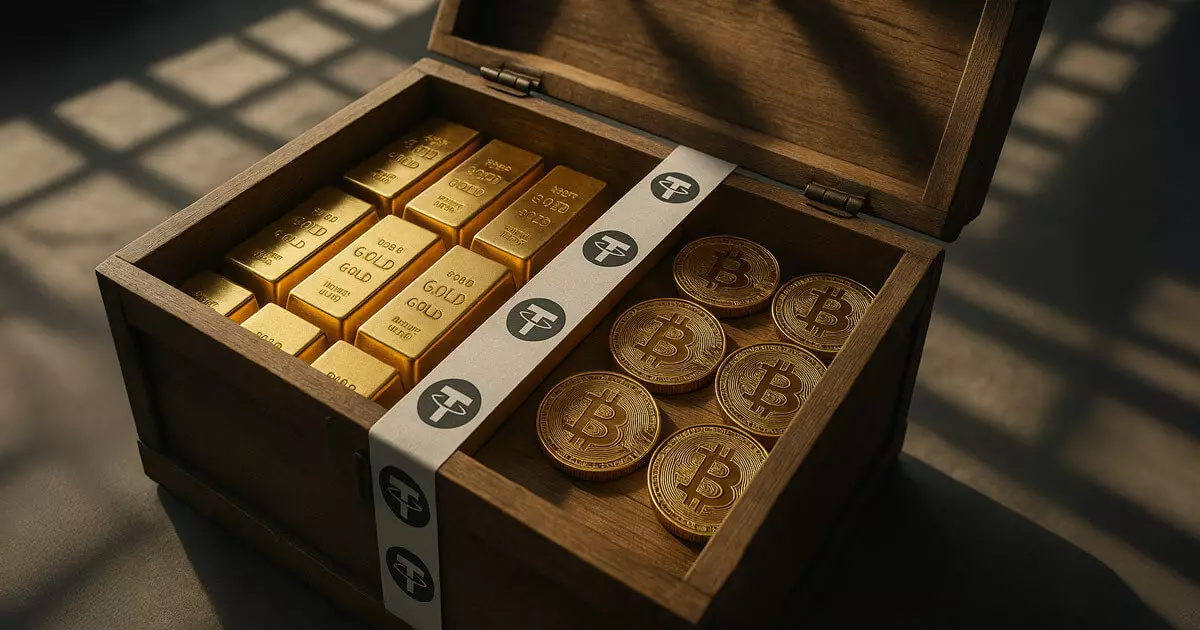In a world increasingly dominated by digital assets and fleeting monetary policies, Tether’s strategic move to hold nearly $8 billion in gold signifies a provocative leap toward financial stability. While critics dismiss such backing as mere PR, the underlying intent is clear: to cultivate confidence in a realm riddled with skepticism. Tether’s leadership recognizes an inherent flaw in fiat-centric systems—an appreciation for tangible assets that can serve as a reliable hedge when monetary waters turn turbulent. This is not just about diversification; it’s a statement that stability can still be anchored in the timeless value of gold, even amidst the relentless expansion of digital currencies.
Challenging Regulatory Constraints
Tether’s embrace of gold as collateral confronts the stiff regulatory currents stirred by the latest policies in both the United States and Europe. The draft GENIUS Act and Europe’s MiCA framework impose stringent limitations, excluding commodities like gold from being used to back stablecoins. Such regulations are, arguably, shortsighted, favoring a narrow definition of “safe” assets rooted in cash equivalents while neglecting the enduring store of value that gold offers. Tether’s strategic reserve management—holding physical gold while innovating with its gold-backed token XAUT—demonstrates a willingness to gamble on regulatory acceptance. The company’s approach challenges regulators to reconsider their stance, emphasizing that a well-managed, gold-backed stablecoin could provide a vital balance between stability and liquidity in the crypto space.
Strategic Risks and Market Realities
Despite the apparent prudence of holding gold, Tether’s heavy reliance on physical bullion raises critical questions about scalability and liquidity. While self-custody reduces operational costs, it exposes the firm to geopolitical risks, vault security concerns, and unforeseen regulatory crackdowns—especially if pressure mounts to liquidate such holdings. The rise of gold in Tether’s reserve portfolio occurs at a time when global demand for bullion surges, driven by fears of fiscal instability and geopolitical tension. Central banks in BRICS nations pouring into gold markets underscore a collective shift toward tangible assets, contrasting sharply with Western regulatory hostility. Tether’s strategy suggests a bold bet: that investors will increasingly seek refuge in assets immune to fiat devaluation and banking risks, eventually making gold-backed tokens more attractive.
The Future of Stablecoins and Gold’s Relevance
Tether’s audacious focus on physical gold highlights a broader debate about the future viability of stablecoins. Can these digital constructs truly maintain stability without traditional fiat backing? Tether aims to bridge the gap by offering a blockchain-native asset indirectly linked to physical gold. This hybrid approach could serve as a blueprint for other issuers, blending the transparency and efficiency of crypto settlement systems with the perceived safety of tangible assets. Nevertheless, the push against gold collateral casts doubt on whether such innovative structures will flourish, especially as regulators tighten their grip. The tension between financial innovation and regulatory compliance remains unresolved; however, Tether’s strategy underscores a central point: in an era of economic uncertainty, tangible assets like gold possess an enduring, if underappreciated, power to anchor trust in the digital age.

